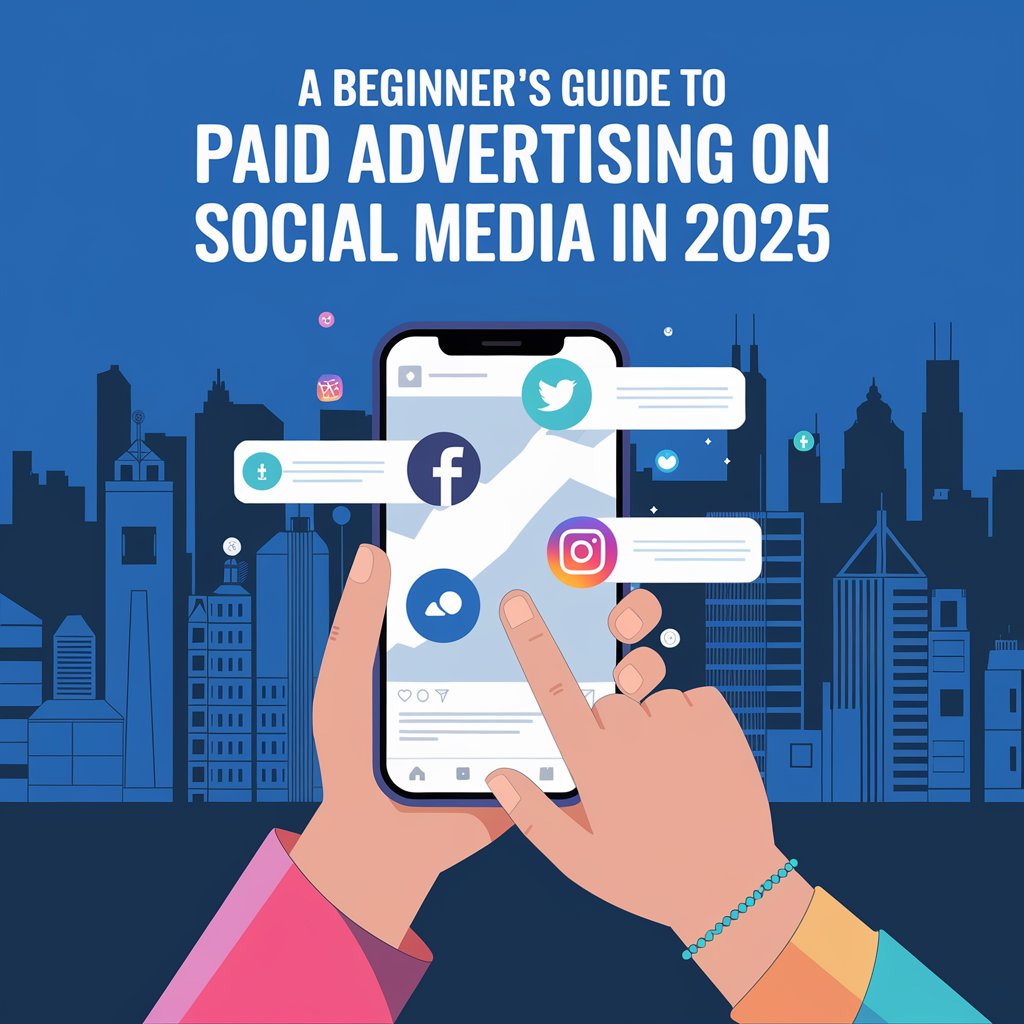A Beginner's Guide to Paid Advertising on Social Media in 2025
In today’s fast-paced digital world, social media platforms have become prime channels for businesses to promote their products and services. Paid advertising on social media allows businesses to reach a wider audience, grow their brand awareness, and generate leads. However, navigating paid advertising can be tricky, especially for beginners. This guide will help you understand the essentials of paid social media advertising, covering the basics, strategies, and best practices to ensure success.

What is Paid Advertising on Social Media?
The activity of running adverts on social media platforms by paying for ad placements is known as paid social media advertising. Based on variables such as location, activity, hobbies, and demographics, these advertisements are directed at particular user groups. Paid advertisements provide visibility in front of the target audience, which increases traffic, conversions, and engagement compared to organic posts that depend on unpaid reach.
Paid advertisements can be customised to meet business goals like enhancing website traffic, generating leads, or raising sales. They can be found in a variety of formats, including photographs, videos, and stories.
Types of Social Media Ads
Depending on your objectives and the platform, you can select from a variety of social media ad formats. Some of the most popular ad formats are listed below:
- Display Advertisements
A call to action, text, and a single image make display ads, sometimes referred to as image ads. These are perfect for exhibiting goods or advertising a particular special.
- Videos for Advertisements
Video advertisements are attention-grabbing, brief segments that might tell a tale or serve as a product demonstration. Users are more likely to interact with video ads since they are particularly compelling.
- Carousel Advertisements
You can display several photos or videos in a single ad by using carousel advertisements. These work well for presenting a range of goods, narrating a story in phases, or outlining several advantages of your service.
- Ads for Stories
On social media sites like Facebook, Snapchat, and Instagram, stories and advertisements are displayed between user tales. These full-screen advertisements vanish after a day, which makes them perfect for promotions that have a deadline.

Popular Social Media Platforms for Paid Advertising on Social Media
Every social media site has a distinct audience and offers different kinds of advertising. The most widely used platforms for paid advertising are broken down as follows:
- Facebook provides one of the most feature-rich platforms for advertising, along with sophisticated targeting options. It’s perfect for getting in front of lots of people in various demographics.
- Instagram is a visual-first platform owned by Facebook. It’s ideal for companies trying to market goods with visually striking content, especially to younger consumers.
- Businesses can advertise on Twitter by promoting accounts, trends, and tweets. It’s a fantastic platform for encouraging participation and brand-related conversations.
- The preferred platform for B2B advertising is LinkedIn. Professionals might be targeted according to their industry, size of firm, and job title.

Why Should You Invest in Paid Advertising on Social Media?
The following are some advantages of paid social media advertising:
- Targeted Reach: By focusing on particular user groups, you can influence their behaviour, interests, and demographics.
- Enhanced Brand Awareness: Advertising makes your brand more noticeable to prospective buyers.
- Increased Interaction: Paid advertisements result in a higher volume of comments, shares, and likes.
- Lead Generation: There are numerous ad styles on social media sites that are specially made for generating leads.
- Measurable Outcomes: Paid advertising provides in-depth data that let you monitor the effectiveness and return on investment of your campaign.
Setting Up Your First Paid Ad Campaign
Launching your first social media ad campaign may feel overwhelming, but by following these steps, you can create an effective ad that meets your business goals.
Define Your Objective
Before creating your ad, you need to determine your objective. Are you trying to increase brand awareness, drive website traffic, generate leads, or boost sales?
Choose Your Audience
Targeting the right audience is crucial for your ad’s success. Most platforms allow you to select your audience based on factors like age, location, interests, and behaviour.
Select the Ad Format
Choose the ad format that best suits your objective. If you’re promoting a new product, a carousel ad might work well. If you want to increase brand awareness, a video ad could be more effective.
Set a Budget
Your budget determines how many people will see your ad and how often. Social media platforms typically allow you to set a daily or total budget for your campaign.
Creating High-Performing Ads
A compelling call to action, eye-catching imagery, and well-written language are all necessary for creating a successful advertisement.
- Creating Captivating Advertising Copy
Ad copy should be appealing, straightforward, and succinct. Draw attention to the advantages of your offering and speak to the concerns of your target market.
- Employing Captivating Images
Your graphics, whether they be in the form of photos or films, should be excellent and pertinent to your offering. Steer clear of busy designs and concentrate on simplicity.
- A compelling call to action (CTA) should be included.
Your call to action (CTA) instructs readers on what to do next. “Shop Now,” “Learn More,” and “Sign Up” are a few examples. Verify that it is understandable and in line with your goal.
How to Measure the Success of Your Ads
Once your ad is live, it’s essential to track its performance. Here are some key metrics to monitor:
Key Metrics to Track:
- Click-Through Rate (CTR): The percentage of users who clicked on your ad.
- Conversion Rate: The percentage of users who completed a desired action (e.g., signing up for a newsletter).
- Cost Per Click (CPC): How much you’re paying for each click on your ad.
- Return on Ad Spend (ROAS): The revenue generated for every dollar spent on ads.
Tools for Monitoring Paid Advertising on Social Media
Most social media platforms provide their analytics tools, like Facebook Ads Manager and Instagram Insights.
You can also use third-party tools like Google Analytics or Hootsuite to track performance across multiple platforms.
Best Practices for Paid Advertising on Social Media
Take into account the following best practices to maximize the effectiveness of your paid advertising efforts:
- A/B testing: Test out various ad formats, images, and copy to see what performs best.
- Retargeting: Display advertisements to visitors who have already connected with your social media accounts or website.
- To strengthen brand identity, maintain consistency in your branding throughout all of your advertisements.
- Mobile Optimization: Since most social media users access platforms through their phones, make sure your ads are optimized for mobile devices.
- Engagement: Answer users’ messages and comments when they interact with your advertisements.
Common Mistakes to Avoid in Paid Advertising on Social Media
Even seasoned marketers make mistakes in their paid ad campaigns. Avoid these common pitfalls:
- Not Defining a Clear Objective: Always know what you want to achieve before launching a campaign.
- Ignoring Audience Insights: Use the data provided by social media platforms to refine your audience targeting.
- Neglecting Ad Copy: Poorly written or confusing ad copy can decrease engagement.
- Skipping A/B Testing: Failing to test different versions of your ads could result in missing out on higher-performing options.
- Not Monitoring Performance: Regularly track your ad’s performance to ensure your budget is being used effectively.
Conclusion
Paid advertising on social media can significantly boost your business’s visibility, engagement, and conversions when done right. By understanding the different ad types, platforms, and best practices, you can create effective campaigns that resonate with your target

